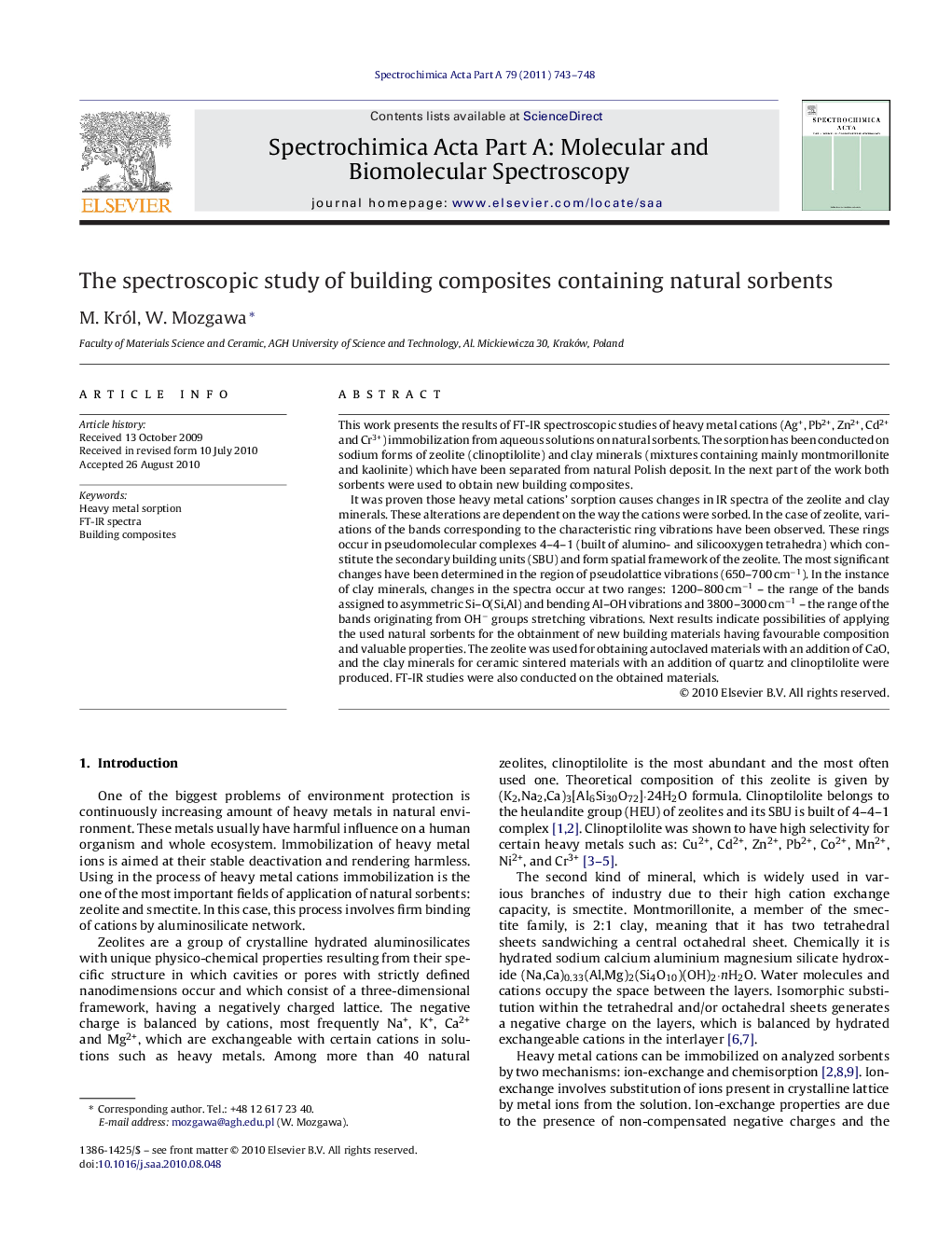| Article ID | Journal | Published Year | Pages | File Type |
|---|---|---|---|---|
| 1232933 | Spectrochimica Acta Part A: Molecular and Biomolecular Spectroscopy | 2011 | 6 Pages |
This work presents the results of FT-IR spectroscopic studies of heavy metal cations (Ag+, Pb2+, Zn2+, Cd2+ and Cr3+) immobilization from aqueous solutions on natural sorbents. The sorption has been conducted on sodium forms of zeolite (clinoptilolite) and clay minerals (mixtures containing mainly montmorillonite and kaolinite) which have been separated from natural Polish deposit. In the next part of the work both sorbents were used to obtain new building composites.It was proven those heavy metal cations’ sorption causes changes in IR spectra of the zeolite and clay minerals. These alterations are dependent on the way the cations were sorbed. In the case of zeolite, variations of the bands corresponding to the characteristic ring vibrations have been observed. These rings occur in pseudomolecular complexes 4–4–1 (built of alumino- and silicooxygen tetrahedra) which constitute the secondary building units (SBU) and form spatial framework of the zeolite. The most significant changes have been determined in the region of pseudolattice vibrations (650–700 cm−1). In the instance of clay minerals, changes in the spectra occur at two ranges: 1200–800 cm−1 – the range of the bands assigned to asymmetric Si–O(Si,Al) and bending Al–OH vibrations and 3800–3000 cm−1 – the range of the bands originating from OH− groups stretching vibrations. Next results indicate possibilities of applying the used natural sorbents for the obtainment of new building materials having favourable composition and valuable properties. The zeolite was used for obtaining autoclaved materials with an addition of CaO, and the clay minerals for ceramic sintered materials with an addition of quartz and clinoptilolite were produced. FT-IR studies were also conducted on the obtained materials.
